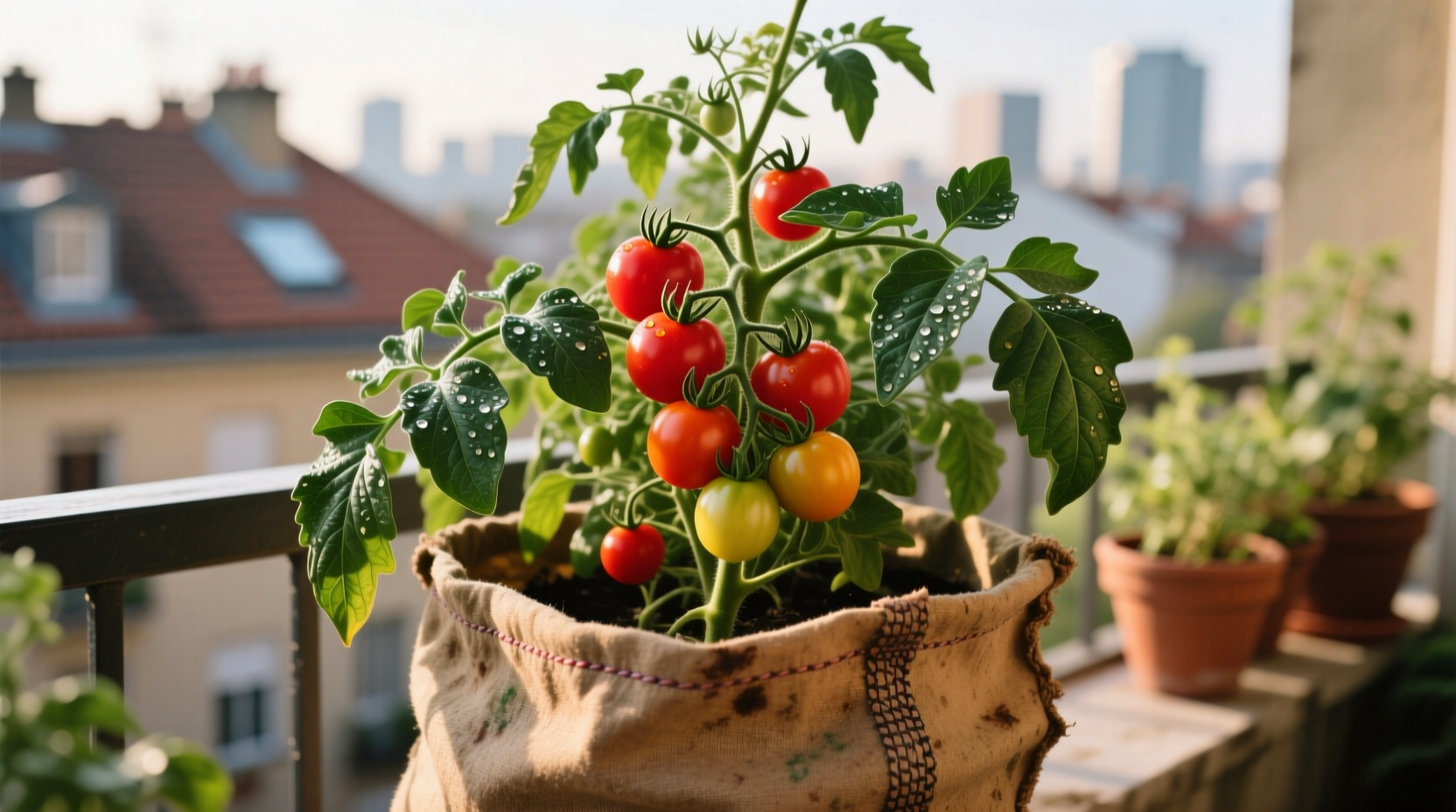Container gardening has revolutionized how urban dwellers and space-limited gardeners grow tomatoes. Understanding the specific requirements of tomato plants in containers separates successful harvests from disappointing results. This guide delivers evidence-based recommendations from agricultural research and horticultural experts to help you select the perfect pot for thriving tomato plants.
Why Container Size Directly Impacts Tomato Yield
Tomato plants develop extensive root systems that require adequate space to access nutrients and water. Research from the University of California Agriculture and Natural Resources shows that tomato plants grown in containers smaller than 5 gallons produce 30-40% less fruit compared to those in properly sized containers. The ideal container provides 18-24 inches of diameter and 12-16 inches of depth to accommodate root development without becoming root-bound.
| Pot Material | Moisture Retention | Temperature Regulation | Durability | Best For |
|---|---|---|---|---|
| Fabric Grow Bags | Moderate | Excellent (breathable) | 2-3 seasons | All tomato varieties, especially in hot climates |
| Plastic Containers | High | Poor (heats quickly) | 5+ years | Cooler climates, determinate varieties |
| Ceramic/Clay | Low | Moderate | Long-term | Ornamental settings, cooler regions |
| Self-Watering Pots | Consistent | Moderate | 3-5 years | Busy gardeners, consistent moisture needs |
Drainage: The Non-Negotiable Factor for Healthy Tomato Roots
Proper drainage prevents root rot and fungal diseases that commonly affect container-grown tomatoes. According to Cornell University's gardening guidelines, tomato pots require multiple drainage holes totaling at least 1 square inch per 5 gallons of container volume. Elevating pots 1-2 inches off the ground using pot feet or stands prevents water from reabsorbing through drainage holes during heavy rains.
Many gardeners make the mistake of adding gravel to the bottom of containers thinking it improves drainage. Research from the American Society for Horticultural Science demonstrates this actually creates a perched water table that increases saturation. Instead, use high-quality potting mix specifically formulated for containers, which contains perlite or vermiculite for optimal moisture management.

Seasonal Considerations for Container-Grown Tomatoes
Container gardening requires different approaches throughout the growing season. During early spring, dark-colored plastic pots help warm soil faster for earlier planting. As temperatures rise in summer, light-colored or fabric containers prevent root overheating. The University of Florida's Institute of Food and Agricultural Sciences notes that soil temperatures exceeding 85°F (29°C) in containers can damage tomato roots and reduce fruit set.
For extended growing seasons, consider using wheeled plant caddies that allow you to move pots to optimal sun exposure throughout the day or protect plants from extreme weather. This mobility addresses the primary limitation of container gardening compared to in-ground planting.
Avoiding Common Container Gardening Mistakes
Even experienced gardeners make critical errors when growing tomatoes in containers. The most frequent issues include:
- Using garden soil instead of potting mix - Garden soil compacts in containers, restricting root growth and drainage
- Overcrowding plants - One tomato plant per 5-gallon container is the minimum requirement
- Inconsistent watering - Fluctuating moisture levels cause blossom end rot and fruit cracking
- Insufficient fertilization - Container plants require regular feeding as nutrients leach from frequent watering
Monitoring soil moisture with a simple $5 moisture meter prevents both underwatering and overwatering. The ideal moisture level for tomatoes is consistently damp (like a wrung-out sponge), never soggy or completely dry.
Special Considerations for Different Tomato Varieties
Not all tomatoes have identical container requirements. Determinate (bush) varieties generally need smaller containers (5 gallons) as they reach a fixed height, while indeterminate (vining) varieties require larger containers (10-15 gallons) to support their continuous growth. Cherry tomato varieties often thrive in slightly smaller containers than beefsteak varieties due to their less extensive root systems.
When selecting pots for specific varieties, consider the mature plant size rather than the seedling size. Many gardeners make the mistake of starting tomatoes in small pots then transplanting multiple times, which stresses the plants. Starting in the final container size eliminates transplant shock and promotes stronger root development.
How often should I water tomato plants in containers?
Container-grown tomatoes typically need daily watering during hot weather, sometimes twice daily in extreme heat. Check soil moisture daily by inserting your finger 2 inches deep - water when the top inch feels dry. Self-watering containers reduce watering frequency while maintaining consistent moisture levels.
Can I reuse tomato pots from last year?
Yes, but proper sanitation is crucial. Remove all old soil and roots, then clean pots with a 10% bleach solution to eliminate disease pathogens. Rinse thoroughly before reuse. Avoid reusing pots that previously hosted diseased plants, as some pathogens can survive in container materials.
What's the best potting mix for tomato containers?
Use a high-quality potting mix specifically formulated for containers, not garden soil. Look for mixes containing peat moss or coconut coir, perlite, and vermiculite. Avoid "moisture control" mixes as they retain too much water for tomatoes. Amend with compost (20-30% of total volume) for added nutrients and beneficial microbes.
Do tomato pots need saucers?
Saucers can help protect surfaces from water damage but require careful management. Empty saucers within 30 minutes after watering to prevent roots from sitting in standing water, which causes root rot. In rainy climates, elevate pots slightly to allow drainage while using saucers to catch excess water.











 浙公网安备
33010002000092号
浙公网安备
33010002000092号 浙B2-20120091-4
浙B2-20120091-4